Sunroom ideas to create spaces where the sun feels like it shines all year round
Designers explain the best sunroom ideas, from getting the light right to maximizing the color, furnishings and feel


Sunroom ideas have come a long way. Elevated and considered, they are taking sunrooms from being barely used seasonal areas to one of the most beloved rooms in the home.
And the pandemic has only increased their popularity, as people are seeking respite wherever they can. “A sunroom offers communion with nature,” says designer Kathleen Hay. “You can experience light and air while still feeling protected.”
Designer Timothy Whealon agrees, adding that “people gravitate toward rooms with light. I think of sunrooms as special spaces that are a bit more whimsical and fun than other rooms in the house.”
And thanks to new and improved building materials, the possibilities are endless. “With better insultation and modern windows that temper UV rays, sunrooms are no longer relegated to warm weather use only,” says designer Janie Molster.
Kathleen Hay—who often uses pressure-treated wood, exterior paint, and outdoor furniture in these spaces—touts the wide range of durable materials that are currently available. “So many people are requesting indoor-outdoor fabrics for their interiors, so we’re lucky that most fabric companies are now producing an outdoor line, which won’t fade,” she says. “The quality has come such a long way that you can barely even tell the difference.”
Sunroom ideas
1. Bring the outside in
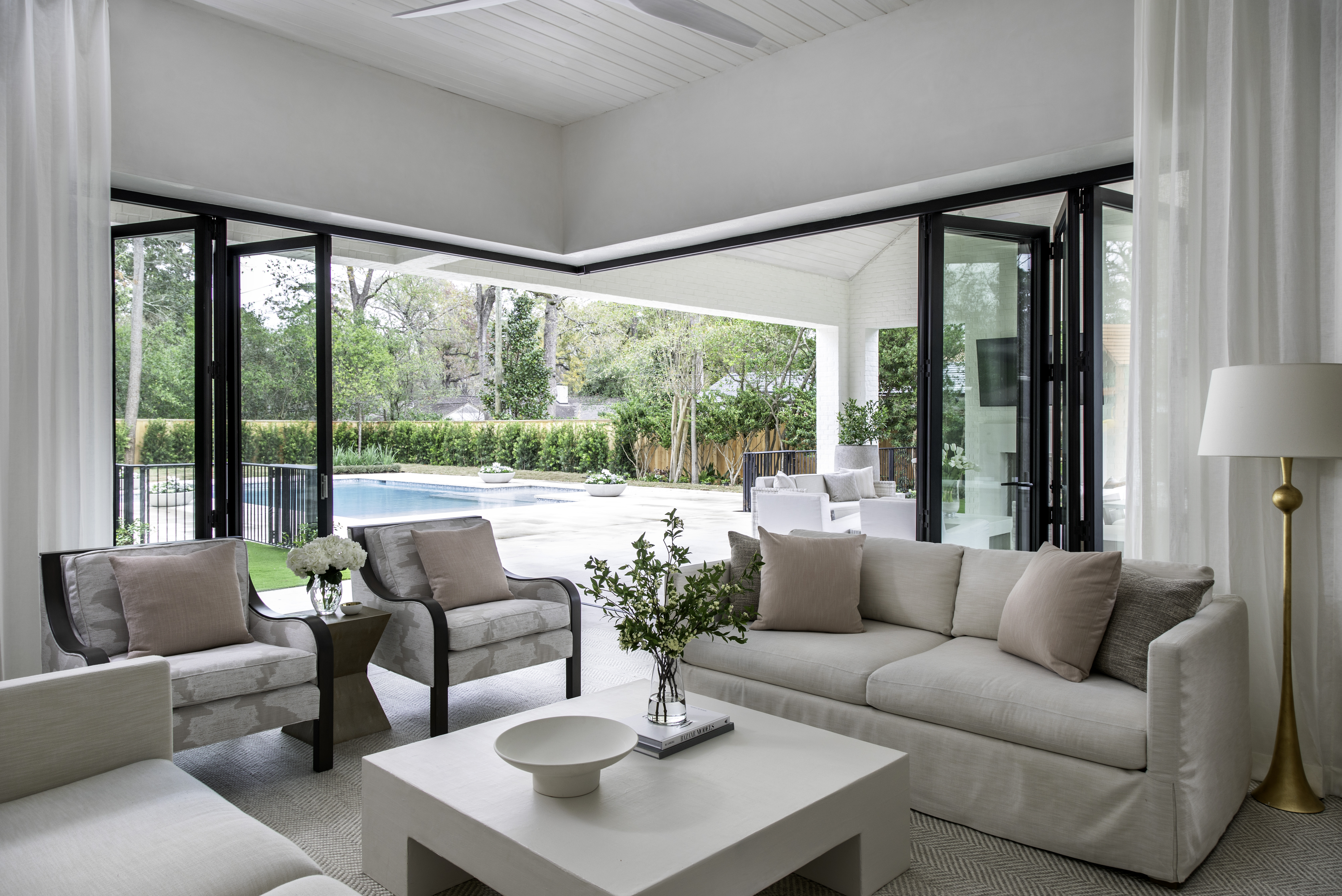
Design by Marie Flanigan
Designer Marie Flanigan urges clients to work with their architect to dream up interesting ways to bring the outside in. In this project, for example, steel-and-glass folding doors join at a 90-degree angle, allowing half the room to be completely open to the pool and outdoor entertaining areas beyond.
Even when the doors are closed on hot and humid days, the room still has an uninterrupted view of the backyard oasis. “This space provides the best of both worlds,” says Flanigan, who decorated the chic space in her client’s favorite palette of blush and white.
2. Choose flexible materials

Depending on the season and the homeowner’s needs, the panels in this sunroom can be fitted with plexiglass, screens, or left completely open. “The homeowners love watching football games here during the fall, which is possible thanks to heaters and the plexiglass panels,” says designer Kathleen Hay, who furnished the space with this flexibility in mind.
“When the panels are off, this room is open to the elements. Therefore, we selected indoor-outdoor rugs and fabrics as well as teak furniture that can hold up in the rain,” she adds.
3. Make sure window treatments feel airy

The best thing about sunrooms is the abundance of natural light, but sometimes it requires a bit of regulation depending on the season and the time of day. For this waterfront sunroom—part of an addition to an older home—designer Janie Molster used a combination of roman shades and curtains in an unlined Belgian linen.
“In sunrooms, you should always keep window treatments feeling airy and never select anything with a heavy lining,” says Janie. “In this room, there’s a glare when the sun is low, so the shades come into play. There’s also a television in this space, so the window treatments are often necessary when that’s in use.” According to Janie, the curtains are rarely closed, but having multiple options to combat various situations is a smart solution.
4. Create a multifunctional space
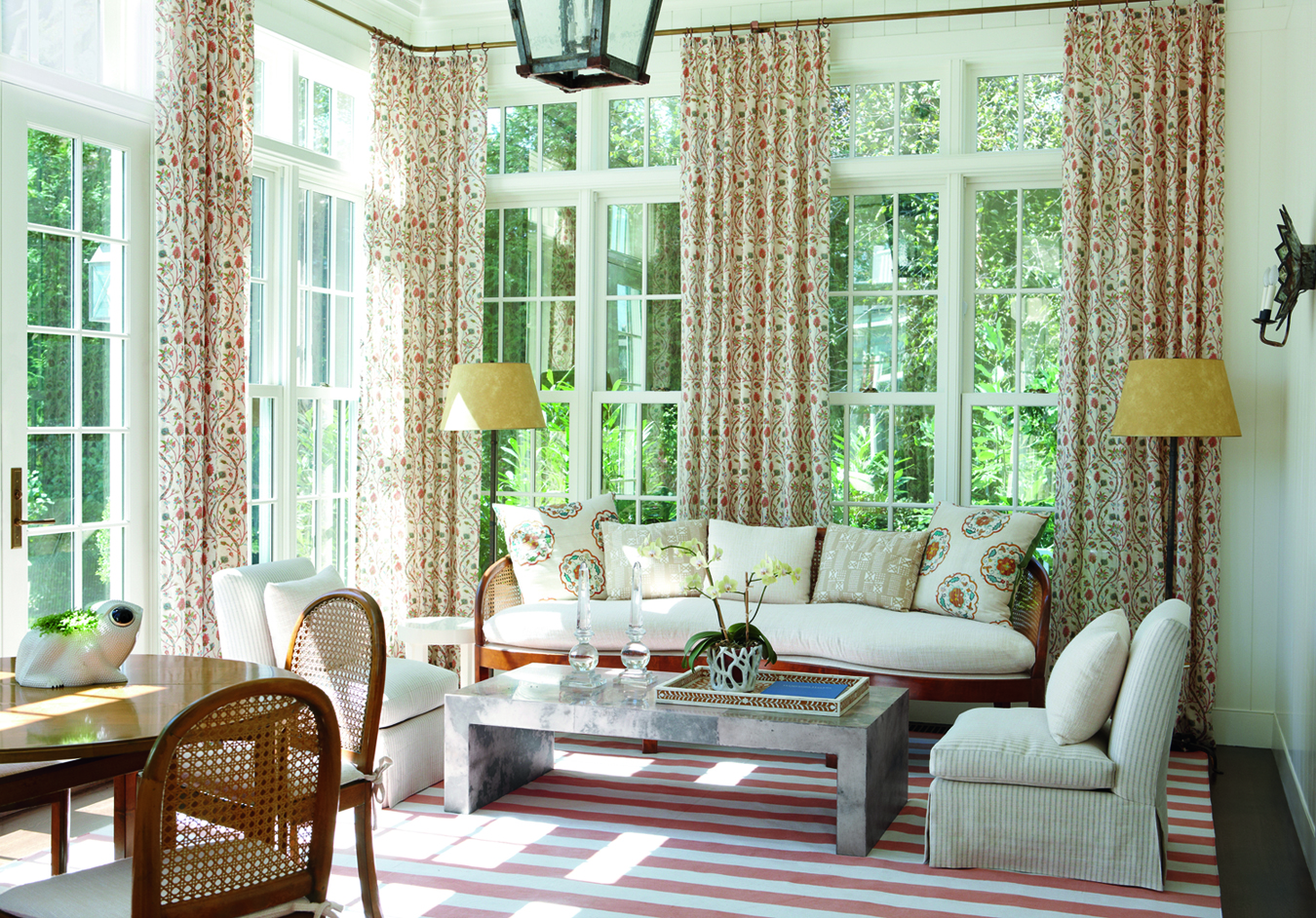
Design by Timothy Whealon
When designer Timothy Whealon begins planning a sunroom, the first question he asks his clients is how they intend to use the space. This particular room—which is located near the living room and library and opens onto the back terrace—sees a lot of action, so Whealon created both a sitting area for reading and enjoying morning coffee as well as a table area for playing games or doing homework.
When it came to selecting the specific furnishings, Whealon took cues from the living room and library, which feature block print patterns and decorative elements from Turkey and Greece. “I wanted to give this space a high-low feel, so I paired a Danish set of table and chairs from the 1940s with an old zinc lantern, a striped cotton dhurrie, vintage textiles on the pillows, and a more modern poured-concrete coffee table,” Timothy says.
5. Don't rule out the upper level
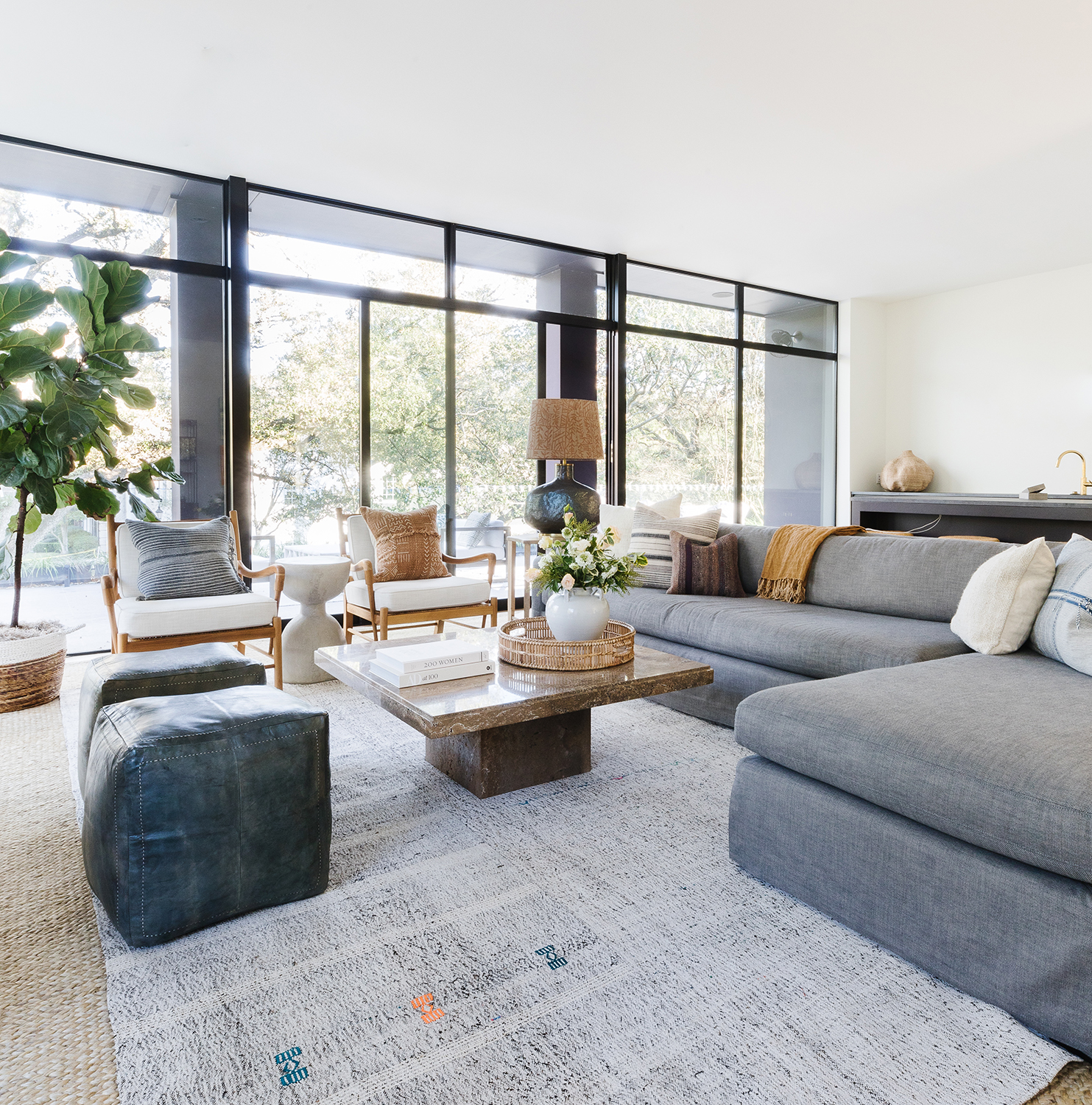
Don’t have the space for a sunroom on the main floor? Don’t despair. Located on the second floor, this sunroom designed by Marie Flanigan features glass sliding doors that open onto a covered porch.
“This space is mostly used a media and game room, and has a built-in bar for entertaining,” explains Marie. “Despite being on the second floor, this is a beautiful, light-filled space that makes for great indoor-outdoor living.”
6. Have fun with color
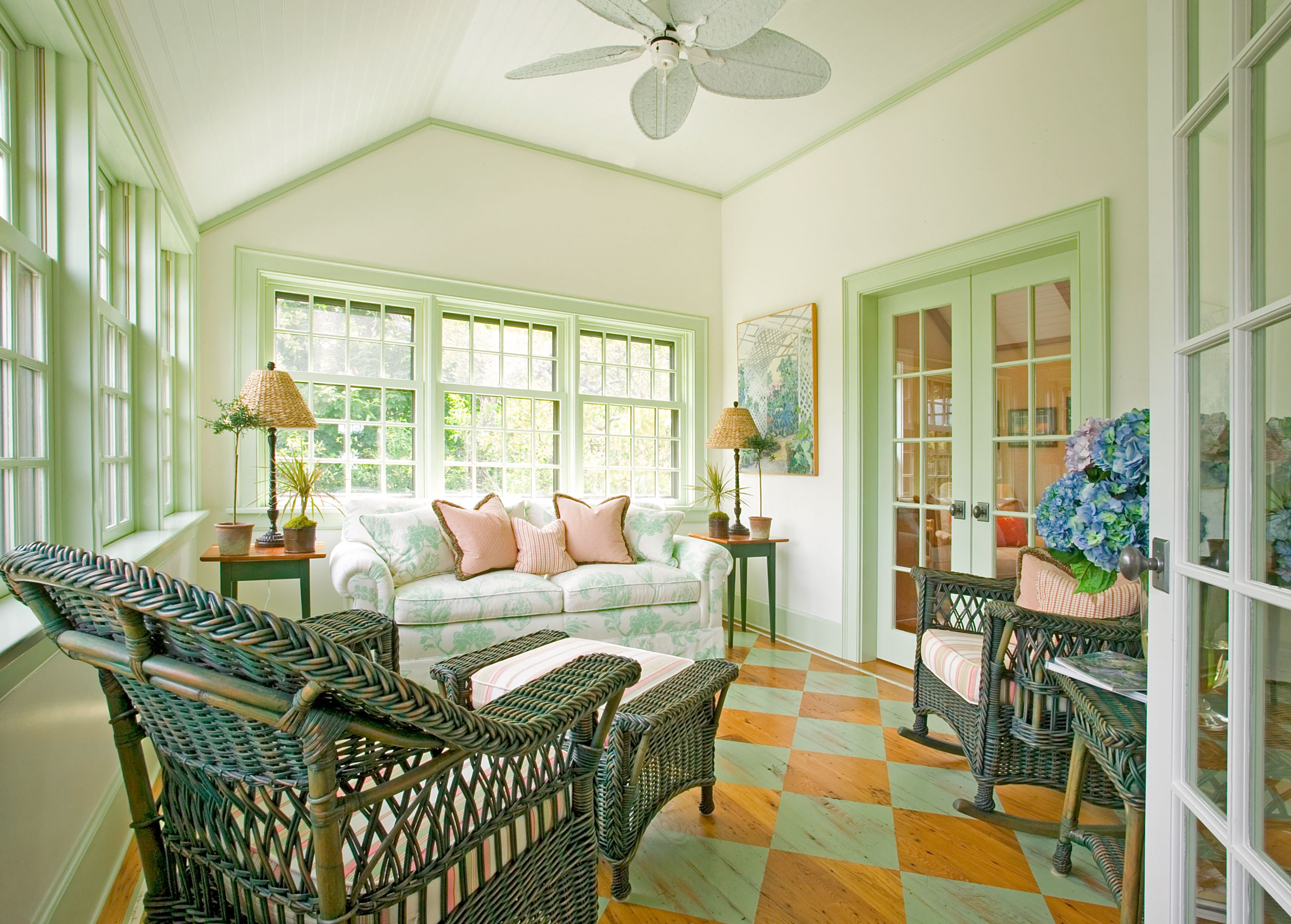
Designer Kathleen Hay jazzed up a classic sunroom by painting the wood floors in a fun diamond pattern and painting the trim and moldings in a coordinating shade of green.
“This is a new construction, but it has a vintage aesthetic with the wicker furniture and the painted floors,” says Kathleen. “Older porches often had painted floors like this, and it adds a touch of whimsy to the space, along with the painted trim. And because this room is climate controlled, we were able to use upholstered items with no problem.”
7. Take sun exposure into account
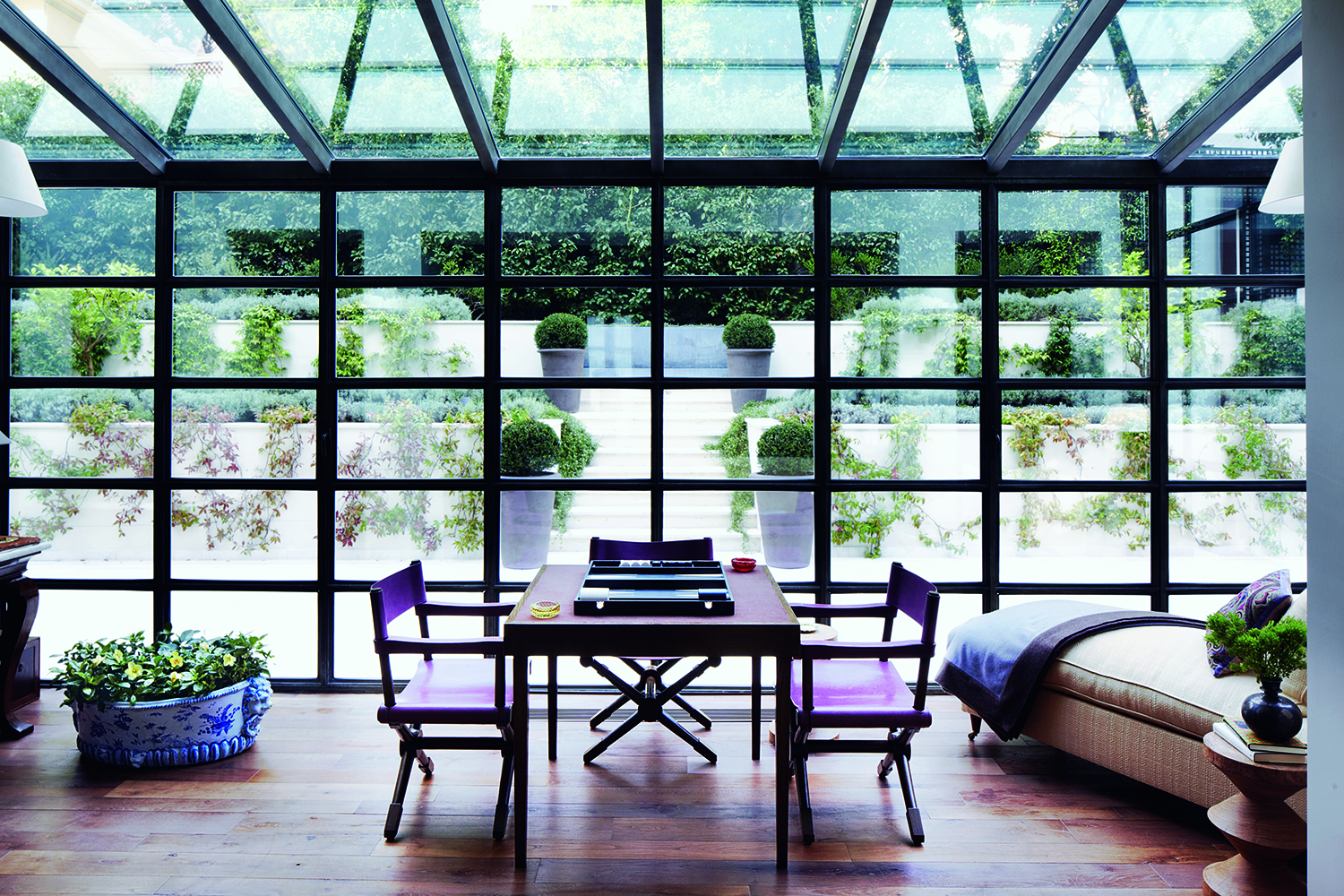
Design by Timothy Whealon
The homeowners of this 1930s residence built a conservatory-like sunroom between their drawing room and garden. According to designer Timothy Whealon, this type of glass enclosure works well in this instance because the room faces north as opposed to south.
“If this space faced south there would be way too much light and heat, but northern light is beautiful for a conservatory,” he says. This multifunctional space—complete with doors that open onto the garden—features a chaise longue for reading and a games table, which can also be used as a desk area.
8. Make the most of your space
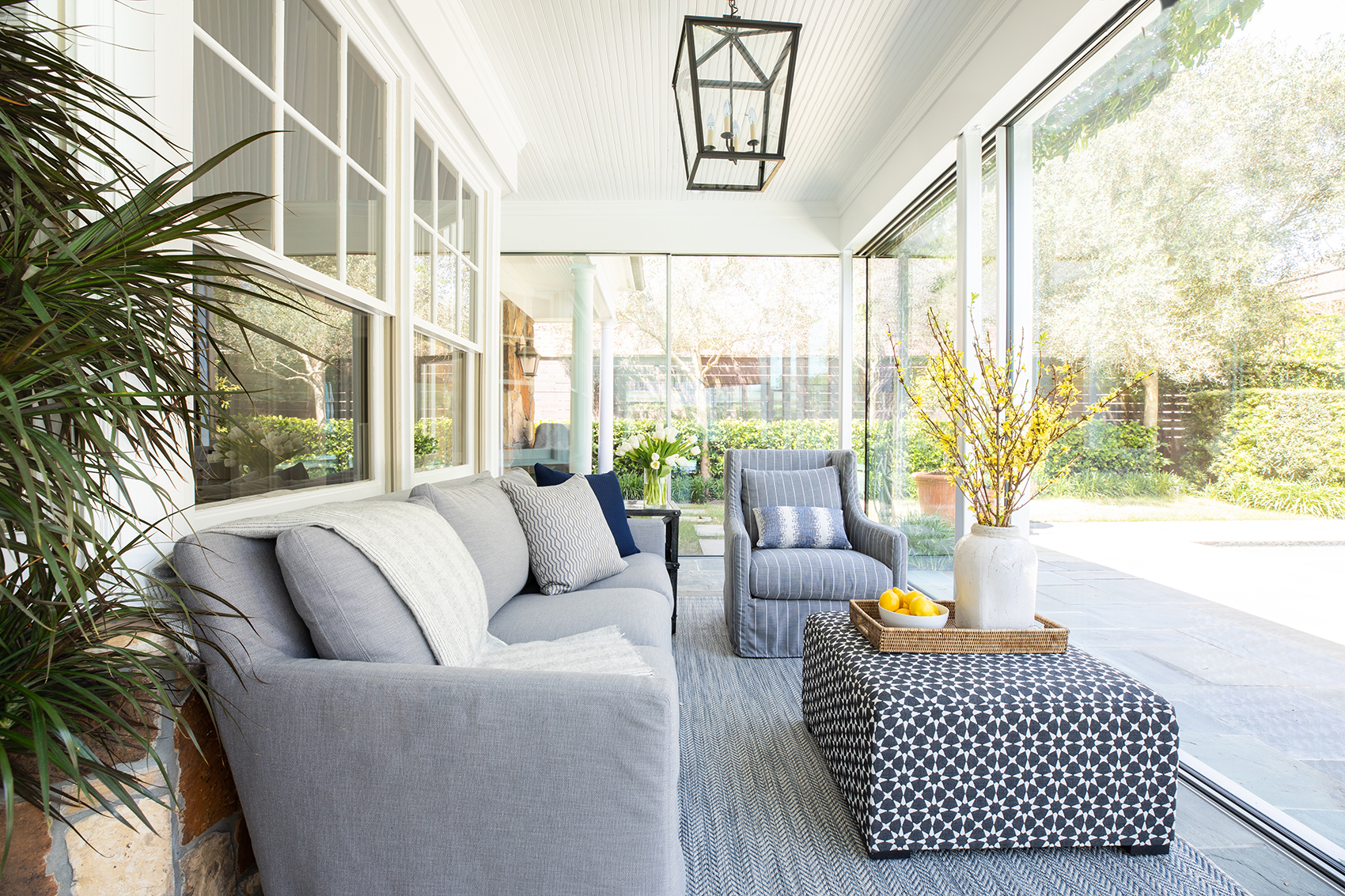
This L-shaped sunroom, which shares a wall of windows with an interior room, is small but mighty. A sitting area overlooks the backyard, while the other section is open to the kitchen’s breakfast area, creating a feeling of al fresco dining.
“Small sunrooms can still have a big impact on how your home functions,” says designer Marie Flanigan. “It’s important to find appropriately scaled furniture and durable performance fabrics that can withstand the harsh sunlight.”
9. Double the living room as sunroom

According to designer Kathleen Hay, a new feature in many of the new construction homes she has seen lately—especially summer homes—is an expansive living room that doubles as a sunroom. “In a very contemporary house, you might find a garage-door style glass opening, and in a warm climate, an entire glass wall might fold open,” says Hay, who also notes that this type of feature is extremely costly. In this summer residence, the outdoors is brought in through a series of glass doors, the middle of which is a large folding version that frames the pergola and dining terrace just outside. “These clients love entertaining, so they wanted to be able to open these doors and have the party flow easily,” says Hay. “During the summer, this outdoor space, with the pool beyond, becomes an extension of the living room.”
10. Get the lighting right
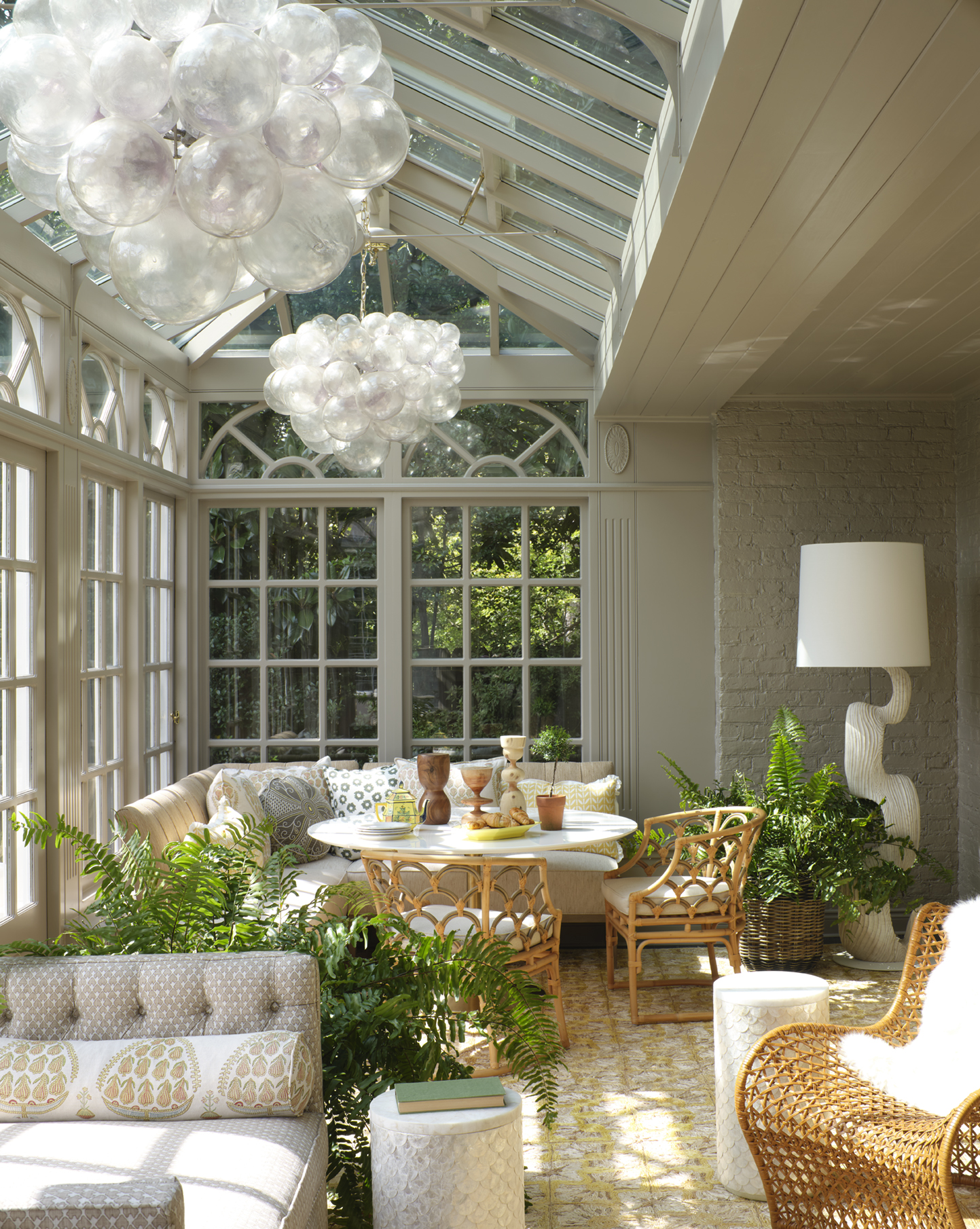
Located in a renovated Georgian-style residence, this conservatory-like sunroom serves as a space for intimate dining, work, reading, or lounging. “It’s a bonus room, so it can have more flexible usage assignments,” explains designer Janie Molster. “It’s nice that it can wear so many different hats.”
This space is obviously gorgeous during daylight hours, but Molster took care in making sure it’s as special post-sunset. “Most people don’t even think about lighting in a sunroom until nighttime, but just like any other room, a sunroom needs plenty of overhead, reading, and task lighting,” says the designer.
To enliven the space, Molster chose two whimsical hanging fixtures that cast a beautiful glow. “These are so fun because they look like celestial orbs. At night, with the moonlight, it feels just dreamy.”
How much do sunrooms cost to build?
“It’s difficult to say, since cost is so dependent on materials, the current market, and whether the room requires a foundation or not,” explains designer Kathleen Hay. However, adds designer Janie Molster, “If a budget is being assigned, a sunroom should be in the realm of what a den or a family room costs. Sunrooms aren’t just seasonal anymore, so they have just as many accoutrements as any other room.” If budget is an issue, designer Timothy Whealon suggests plants as a potential solution. “I’ve designed sunrooms that are very minimally furnished and filled with citrus trees or topiaries,” he says.
Do you need a foundation for a sunroom?
“It’s really a matter of engineering, because it depends on variants like the size of the room and the proposed roof,” says designer Janie Molster. But designer Timothy Whealon has seen many a sunroom without a foundation - foundations are not always needed. “An existing outdoor surface like an old brick or stone terrace can add so much character to a new sunroom,” he says.
Can you convert a deck into a sunroom?
“It depends on the deck,” says designer Janie Molster. “A conversion into a sunroom can be done with a brick pier structure—which are often found at older properties—but not one with four pilings. And for maximum function, the room should be fully insulated. You wouldn’t want to simply enclose a deck with a flimsy enclosure because you will end up with a hothouse.”
Meanwhile, designer Kathleen Hay encourages people to consult zoning regulations, since a sunroom will count toward the square footage of a home.
Be The First To Know
The Livingetc newsletters are your inside source for what’s shaping interiors now - and what’s next. Discover trend forecasts, smart style ideas, and curated shopping inspiration that brings design to life. Subscribe today and stay ahead of the curve.

Alyssa Bird is a New York−based freelance writer and editor with experience covering architecture, interior design, travel, hospitality, and real estate. She has held editorial positions at Architectural Digest, Elle Decor, Hamptons Cottages & Gardens, and New York Cottages &Gardens. When she’s not writing about dreamy spaces, you can find her tweaking the decor in her own Brooklyn home, honing her green thumb, testing out a new recipe, or scouring for antiques.
-
 Burl Wood Decor Is 2025’s Most Coveted Comeback — Here’s How to Get the Storied Swirls for Less
Burl Wood Decor Is 2025’s Most Coveted Comeback — Here’s How to Get the Storied Swirls for LessIrregularity is the ultimate luxury, but you don’t need an antiques dealer to find it
By Julia Demer Published
-
 5 Garden Features That Instantly Add Value to Your Home — While Making Your Outdoor Space More Practical, too
5 Garden Features That Instantly Add Value to Your Home — While Making Your Outdoor Space More Practical, tooGet to know all the expert tips and tricks for making your backyard a standout selling point for your home.
By Maya Glantz Published